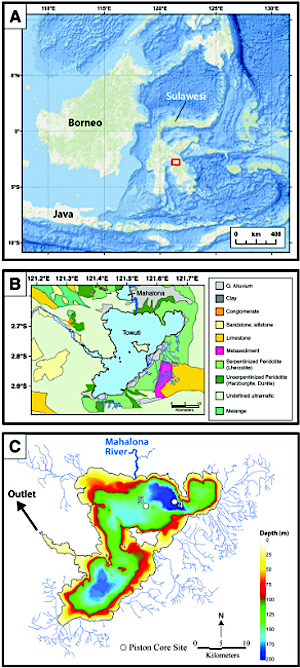 [Editor note: text from a GSA release here.]
[Editor note: text from a GSA release here.]
In their GSA Bulletin article published online last week, Timothy A. Goudge and colleagues detail the clay mineralogy of sediment from Lake Towuti, Indonesia, using a technique called visible to near-infrared (VNIR) spectroscopy. VNIR measures the signature of reflected light from a sample across a larger wavelength range than just visible light. At Lake Towuti, the spectral record shows distinct variations in clay mineralogy over the past 40,000 years.
The record also captures the response of the lake system to changing climate, including changes in lake levels, forced delta progradation, and river incision. According to Goudge and colleagues, this demonstrates the utility of VNIR spectroscopy in developing paleoenvironmental records over tens of thousands of years.
Interestingly, Goudge and colleagues also suggest that paleolake deposits on Mars should preserve similar paleoenvironmental information that could be accessed through remote sensing studies of stratigraphy and VNIR reflectance spectroscopy.
Lead author Tim Goudge says, “The major link between this study of lake sediment in Indonesia and lake deposits on Mars is in terms of the methods we used. We can differentiate material properties with color (e.g., rust is red because of the iron in it), so VNIR spectroscopy allows us to determine what minerals are within a sample of lake sediment.” [More at links]








